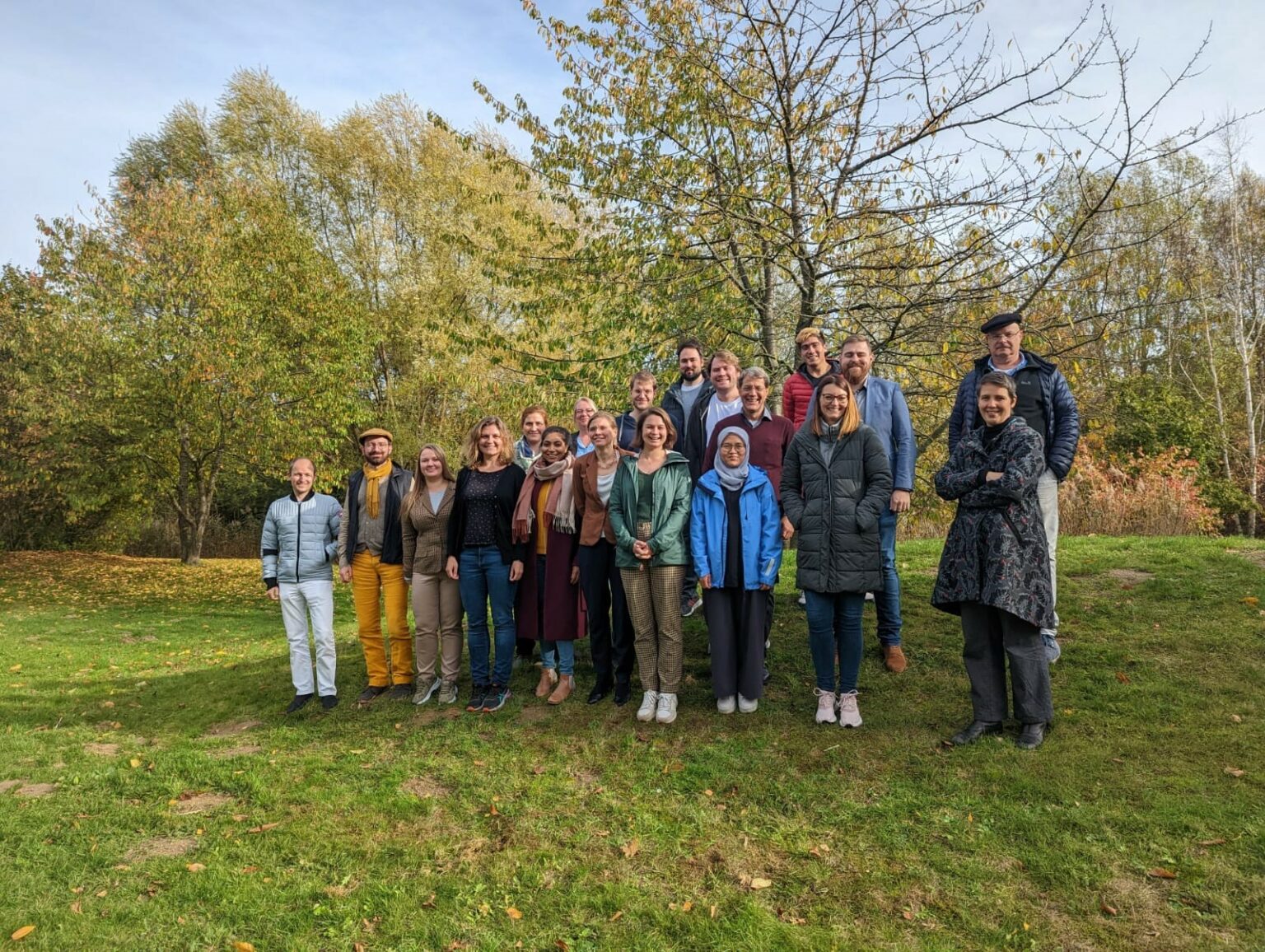RESPINOW – One of the seven research networks of the modeling network held its kick-off meeting in Braunschweig from 02.11.-03.11.22. Initial results were presented at the meeting and the next steps were discussed.
The joint project RESPINOW, led by Dr. Berit Lange, Head of Clinical Epidemiology in the Department of Epidemiology at the Helmholtz Centre for Infection Research (HZI), aims to investigate the medium- and long-term effects of non-pharmaceutical interventions (NPIs) used during the COVID-19 pandemic on respiratory infections such as respiratory syncytial virus, influenza and pneumococcal diseases. The aim is to develop an integrated model to simulate the transmission of various respiratory infections and the collateral effects of NPIs on their medium and long-term disease burden. Ten partners from all over Germany and Poland are involved.
Full press release of the HZI
New modeling platform helps to understand the dynamics of respiratory infections
BMBF funds joint RESPINOW project led at the HZI by ten research institutions from Germany and Poland with 1.88 million euros
Due to the hygiene and protective measures introduced in the course of the coronavirus pandemic, respiratory infections such as influenza and pneumonia caused by pneumococci or the respiratory syncytial virus (RSV) initially decreased in 2020. At the same time, this led to an increase in the number of people who have not yet come into contact with these pathogens in 2020, or who have come into contact with them less than usual. In the medium and long term, this will result in a greater increase in these infections than usual. Current infection dynamics models do not yet take these side effects into account, and the effects themselves have not been researched very much.
In order to gain new insights into the effect of the coronavirus pandemic and the measures taken on the course of various respiratory diseases, scientists from several research institutions have now launched the joint RESPINOW project(www.respinow.de). This is a modeling platform that aims to develop integrated models to simulate the transmission of various respiratory infections and the side effects of hygiene and protective measures on their medium and long-term disease burden.
The new network is coordinated by Berit Lange, Head of Clinical Epidemiology in the Department of Epidemiology at the Helmholtz Centre for Infection Research (HZI). RESPINOW is funded by the Federal Ministry of Education and Research (BMBF) with a total of 1.88 million euros, 416,000 euros of which will go to the HZI. The project began on May 1, 2022. A kick-off meeting, at which the initial results were presented and the next steps discussed, was held on 2. and November 3 in Braunschweig.
The first step in the project is a systematic compilation of data and known literature on the medium and long-term spread of respiratory diseases following pandemic-related protective and hygiene measures. Claudia Denkinger, Head of Infectious Diseases and Tropical Medicine at Heidelberg University Hospital, is responsible for this part of the project. “Data has been collected globally over the past two years on the dynamics of respiratory infections during the pandemic, but it is important to bring this together to learn from it for the future,” says Denkinger. Also involved in this sub-project are Rolf Kaiser from the University of Cologne, Veronika Jäger from the University of Münster, the Vaccination Prevention Department of the Robert Koch Institute, Lisa Koeppel from Heidelberg University Hospital and Alexander Kuhlmann and Cornelia Gottschick from the University of Halle.
The data from the Germany-wide antibody study on the SARS-CoV-2 virus conducted by the HZI (MuSPAD, “Multilocal and Serial Prevalence Study on Antibodies against SARS-2 Coronavirus in Germany”) is being incorporated into a second sub-project of RESPINOW: In it, the scientists are collecting data on immunity to RSV, influenza and pneumococci as well as on contact behavior after a pandemic. “It is important to conduct these surveys now. The insights into the frequency of infection, immunity and contact behavior that we are now gaining during and shortly after the COVID-19 pandemic are unprecedented,” says Berit Lange, who is leading this sub-project and carrying it out together with Nicole Schneiderhan-Marra from the NMI Natural and Medical Sciences Institute in Reutlingen and André Karch and Veronika Jäger from the Institute of Epidemiology at the University of Münster.
Under the direction of Viola Priesemann from the Max Planck Institute for Dynamics and Self-Organization in Göttingen, the data and data synthesis will then be used to create an integrated mathematical model for various respiratory infections. “It is particularly important for such integrated models to correctly incorporate relevant population data on immunity and contact behavior,” says Priesemann. “Only this makes it possible for us to map the effects of various measures on several respiratory infections in the short and long term.” Wolfgang Bock from the Technical University of Kaiserslautern, the vaccination modeling team from the Robert Koch Institute and Tyll Krüger from the University of Wroclaw, Poland, are supporting this project.
In the final sub-project, Melanie Schienle and Johannes Bracher from the Karlsruhe Institute of Technology (KIT) are building an integrated forecasting hub together with some of the modeling groups already mentioned. This is a platform in which various mathematical models feed short-term forecasts on the frequency of infection and the health system burden of various respiratory infections. “This will enable us to provide concrete support for public health in Germany in the coming years with regard to the seasonal flu and RSV epidemics,” says Johannes Bracher. Some of the aforementioned modeling groups from RESPINOW will support the Forecasthub with models, and external groups are also invited to do so.
“Overall, we want RESPINOW to make both a short-term contribution to strengthening public health and a long-term strengthening of the infection epidemiology research infrastructure in Germany for the next pandemic,” says Berit Lange, summarizing the aim of the network.


